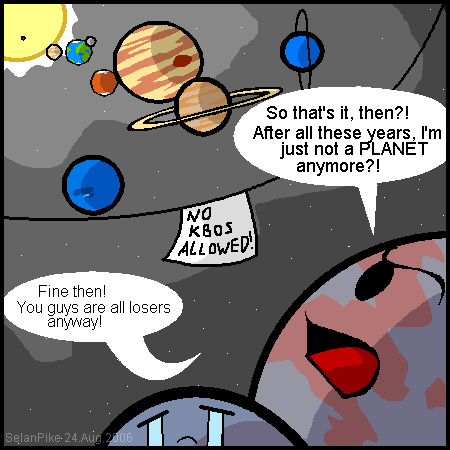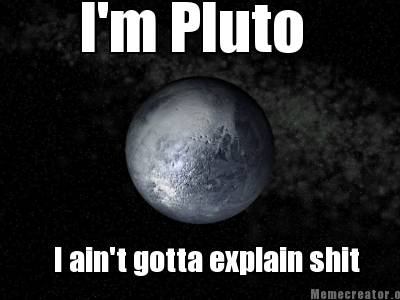You are using an out of date browser. It may not display this or other websites correctly.
You should upgrade or use an alternative browser.
You should upgrade or use an alternative browser.
Is Pluto an astrological planet?
- Thread starter JUPITERASC
- Start date
david starling
Well-known member
Is Pluto too small to be considered an Astrological-planet?
Phoenix Venus
Well-known member
Is Pluto too small to be considered an Astrological-planet?
Only Rudhyar explained it so eloquently that Pluto represents the seed of the solar system, thus retains much potency in its small size

JUPITERASC
Well-known member
dwarf planets are so named because the word dwarf relates to smallnessIs Pluto too small to be considered an Astrological-planet?

JUPITERASC
Well-known member
Dwarf planet Eris then has same potencyOnly Rudhyar explained it so eloquently
that Pluto represents the seed of the solar system,
thus retains much potency in its small size

It's questionable if the size of a planet would matter so much, once no one would suggest that Jupiter has more importance than the small Mercury, for example - and yet, fellow Jupiter, you wouldn't be written here if it wouldn't be with the aid of the tiny and winged Hermes!
If we think about "functions" we could perhaps being fooled by the Universe when thinking about sizes - and the new planet Chiron smashes us with his truth: we know for experience that small keys can open immense gates...
I believe, though, that the modern "rulership" of planets is somewhat questionable with the discovery of so many beyond Neptune planets... Specially the modern rulership of Scorpio being assigned to Pluto becomes more questionable.
From experience, I see that Pluto is about power, and has an immense effect on Earth, but perhaps the other TNO's (and subNO's) also have?
I wouldn't question for an instant the immense influence of Pluto, and this by experience, but when it comes to sign's rulerships, things get confusing...
If we think about "functions" we could perhaps being fooled by the Universe when thinking about sizes - and the new planet Chiron smashes us with his truth: we know for experience that small keys can open immense gates...
I believe, though, that the modern "rulership" of planets is somewhat questionable with the discovery of so many beyond Neptune planets... Specially the modern rulership of Scorpio being assigned to Pluto becomes more questionable.
From experience, I see that Pluto is about power, and has an immense effect on Earth, but perhaps the other TNO's (and subNO's) also have?
I wouldn't question for an instant the immense influence of Pluto, and this by experience, but when it comes to sign's rulerships, things get confusing...
JUPITERASC
Well-known member
It's questionable if the size of a planet would matter so much, once no one would suggest that Jupiter has more importance than the small Mercury, for example - and yet, fellow Jupiter, you wouldn't be written here if it wouldn't be with the aid of the tiny and winged Hermes!
If we think about "functions" we could perhaps being fooled by the Universe when thinking about sizes - and the new planet Chiron smashes us with his truth: we know for experience that small keys can open immense gates...
I believe, though, that the modern "rulership" of planets is somewhat questionable with the discovery of so many beyond Neptune planets... Specially the modern rulership of Scorpio being assigned to Pluto becomes more questionable.
From experience, I see that Pluto is about power, and has an immense effect on Earth, but perhaps the other TNO's (and subNO's) also have?
I wouldn't question for an instant the immense influence of Pluto, and this by experience, but when it comes to sign's rulerships, things get confusing...
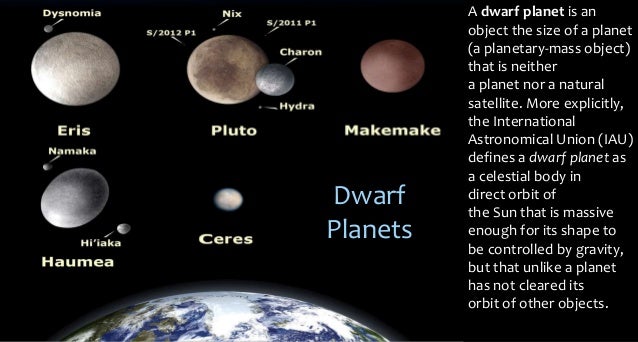
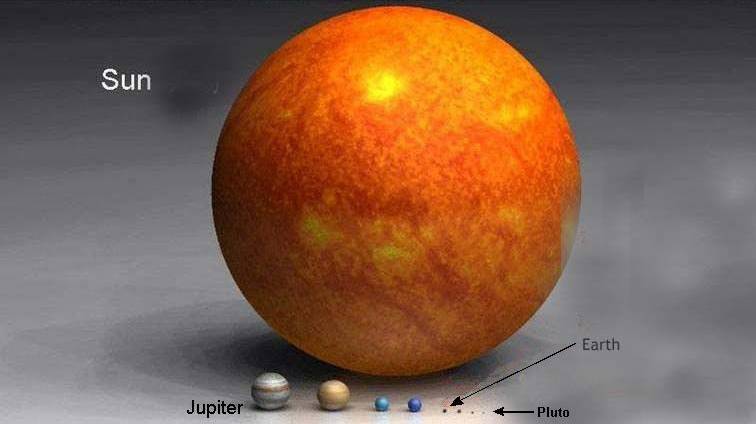
Zonark
Well-known member
Zonark
Well-known member
Pluto's huge atmosphere, ten times bigger than the solid center that most people take for the planet means it is much bigger than we thought it was.
Behold;
Can any of your other dwarf planets boast such a bodacious atmosphere?
Pluto's sky is way thicker than Earth's, it must be terrifying to stand there and look up.
A planet's atmosphere accounts for its size, also Pluto's seems to trail behind it like a comet would, which is spectacular.
From all this I conclude Pluto is most definitely a planet.
JUPITERASC
Well-known member
Can any of your other dwarf planets boast such a bodacious atmosphere?
Pluto's sky is way thicker than Earth's, it must be terrifying to stand there and look up.
A planet's atmosphere accounts for its size, also Pluto's seems to trail behind it like a comet would, which is spectacular.
From all this I conclude Pluto is most definitely a planet.
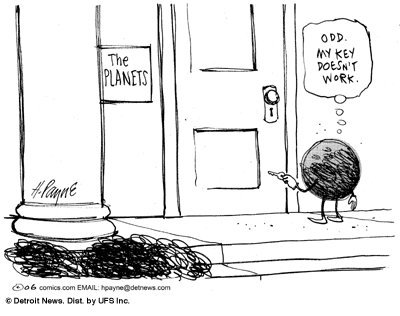
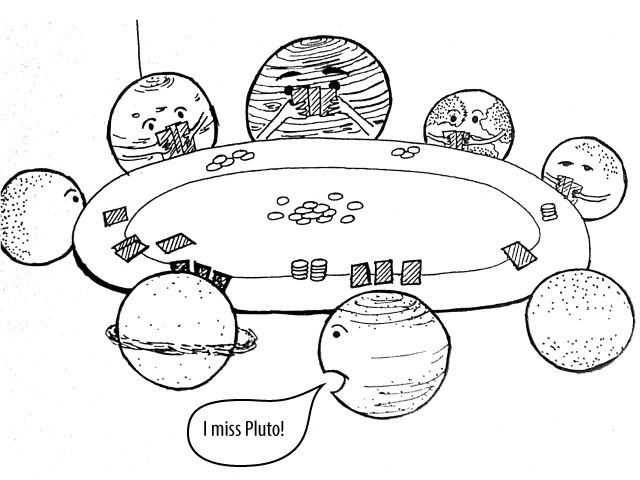
JUPITERASC
Well-known member
JUPITERASC
Well-known member
Dwarf planet orbits are slightly different from those of the planets relative to the zodiac. The latitude of Pluto can go double the amount of the Traveller (the Moon). Traditionally some people have defined the zodiac as somewhere extending to the maximum latitude of the Moon. Thus, Pluto is often outside the ''zodiacal belt'' (defined by classical tropical astrologers).
https://i.stack.imgur.com/IavIQ.jpg
https://i.stack.imgur.com/IavIQ.jpg
Last edited:
Ru33erDucky
Banned
Poor Pluto; the black sheep of the family.
david starling
Well-known member
Poor Pluto; the black sheep of the family.
Pluto's got Heart, though.
david starling
Well-known member
Dwarf planet orbits are slightly different from those of the planets relative to the zodiac. The latitude of Pluto can go double the amount of the Traveller (the Moon). Traditionally some people have defined the zodiac as somewhere extending to the maximum latitude of the Moon. Thus, Pluto is often outside the ''zodiacal belt'' (defined by classical tropical astrologers).
https://i.stack.imgur.com/IavIQ.jpg
You sure about that? If you're talking about a planet being Out of Bounds relative to Earth's Inclination, Mars can go farthest out, and the Moon goes farther out than Pluto.
JUPITERASC
Well-known member
dwarf planetoid pluto’s distance from the Sun is 5.9 BILLION km
You sure about that? If you're talking about a planet being Out of Bounds relative to Earth's Inclination,
Mars can go farthest out, and the Moon goes farther out than Pluto.

– the exact number is 5,906,376,272 km.
Need that figure in miles?
Dwarf planetoid pluto’s distance from the Sun is 3.67 billion miles.
Keep in mind that this distance is an average.
Dwarf planetoid pluto follows a highly elliptical orbit around the Sun.
At the closest point of its orbit, called perihelion
dwarf planetoid pluto gets to within 4.44 billion km from the Sun. And then at its most distant point of its orbit, called aphelion
Dwarf planetoid pluto gets to within 7.38 billion km of the Sun.
Astronomers use another term to measure distance in the Solar System called “astronomical units”.
1 astronomical unit, or AU, is the average distance from the Earth to the Sun
– about 150 million km.
dwarf planetoid pluto’s perihelion is 29.7 AU, and its aphelion is 49.3 AU.
dwarf planetoid pluto’s average distance, or semi-major axis, is 39.5 AU.
IN CONTRAST

The Moon, on average, is about 150 MILLION kilometers away from the Sun.
an interesting coincidence
since the Earth orbits about 150 million kilometers away from the Sun.
What? Well, the Moon orbits the Earth
so it’s following the Earth around in its orbit around the Sun.
Earth actually takes an elliptical path around the Sun.
It ranges in distance from 147 million km to 152 million km.
So the Moon can actually range in this distance as well.
But wait, we can get even more precise.
The Moon takes an elliptical orbit around the Earth.
Sometimes it gets as close as 363,000 km
and other times it gets as far as 406,000 km.
So the closest point that the Moon can get to the Sun
is when the Earth is at its closest point in orbit
and the Moon is most distant from the Earth.
The closest point that the Moon can actually get to the Sun
is 146,692,378 km.
The furthest that the Moon can get from the Sun is the opposite situation.
The Earth is at its most distant from the Sun
and the Moon is furthest from the Earth.
At that point, the Moon would be 152,503,397 km.
And that’s how far the Moon is from the Sun
THE UNIVERSE TODAY
Ru33erDucky
Banned
Puck Fluto, ya heard.
Don't talk to me or my Sun again!
JUPITERASC
Well-known member
Don't talk to me or my Sun again!
